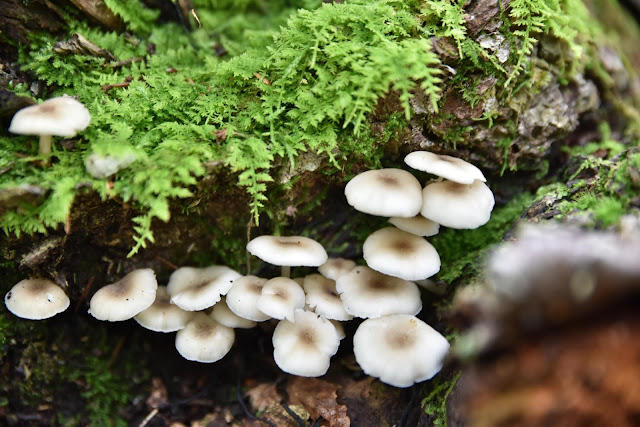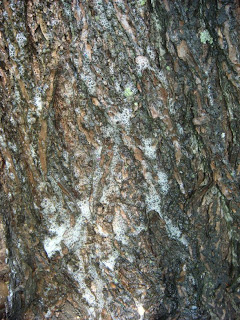Nearby Nature: Finding Fungus
 |
| Tiny mushrooms growing on a log in Woodford State Park - B. Steele |
 |
| Holding a puffball. |
The first really cool mushrooms we found the other day are these round, potato looking, apple sized mushrooms. Using our National Audubon Society Field Guide to Mushrooms, we identified these as tumbling puffball mushrooms. Last fall when they grew, they were round, white and firm. Now they are dried out, brown, with the skin splitting revealing thousands of darker brown spores inside. Spores are like the seeds of mushrooms, so if you step on these small tumbling puffballs you are spreading the spores around the area. You are planting mushrooms!
We found lots of these mushrooms, and they really were tumbling around on windy days. We didn’t see the fresh ones growing last fall because the area was overgrown with shrubs and goldenrod, but this fall we will look for them as they are edible and delicious. We decided to use them to create smoke screens for each other when we were playing, they work very well for that.
 |
| On the left - Witch's butter. On the right - amber jelly roll. |
I looked them up in my field guide, which I started carrying in my backpack after we saw the tumbling puffball mushrooms. The brown jelly mushrooms have many names, but their Latin name is Exida recisa. Some of my favorite common names for this fungus are amber jelly roll, and brown witch’s butter. They really do look like jelly. These mushrooms start out as clear blisters and then they expand, sometimes attaching to each other and they turn from translucent to brown. The field guide assured us they are edible, but they do not look very appealing, unless you are a witch looking for topping for your toast.
On a later exploration we found another variety of this mushroom, the yellow witch’s butter. These are not the same species but very similar mushrooms. We found both witch’s butter mushrooms on small sticks that had fallen off trees, so go out and look at the sticks in your yard. Do you see anything interesting growing there?
Rebecca Roy, Conservation Education Coordinator

.jpg)
.jpg)
Comments
Post a Comment
Feel free to let us know what you think.